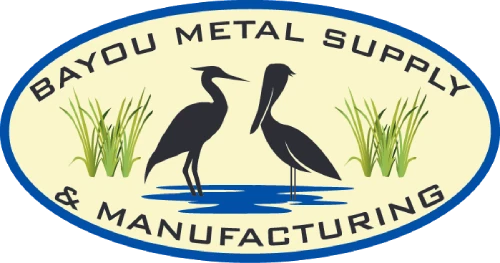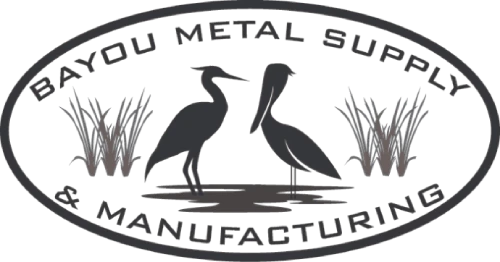Friction Stir Welding
Friction Stir Welding (FSW) for Aluminum Shipbuilding and Heavy Manufacturing
Friction Stir Welding a Major Positive Impact on Aluminum Shipbuilding
Cost Savings from Friction Stir Welding in Real Case Studies
The following comments on cost savings have been published by users of the FSW process and speak for themselves:
- The Boeing Company reported that the FSW specific design of Delta IV and Delta II rockets achieved 60% cost saving and reduced the manufacturing time from 23 to 6 days.
- For “Slipper”, the US Army’s cargo interface pallet, FSW processing reduced the sandwich assembly cost from 61% to only 19% of the total cost. The Air Force estimates the total cost savings attributed to FSW (for a projected buy of 140,000 Slippers) at $315 million.
- Hydro Aluminum reported that at shipyards using prefabricated FSW panels the improvement in the aluminum fabrication has resulted in 15% reduction in the man-hour per ton rate.
- Fjellstrand shipyard claimed a total fabrication cost saving of approximately 10% based on improved ship design, streamlined fabrication at the shipyard, and a supply of prefabricated FSW panels and structures based on extruded profiles.
Bayou Leads the USA in Friction Stir Welding for Aluminum Shipbuilding
History of Friction Stir Welding for Shipbuilding
The Welding Institute in Cambridge, UK invented Friction Stir Welding (FSW) in 1991. It is one of the top developments of the last few decades on the mechanical side of ship construction. It is now mainstream in ship construction for aluminum ships; however, few companies have extensive experience and large production capabilities needed to deliver the promises of lower costs and improved quality. It’s a state welding process (no melting) where a machine rotates, plunges, and then traverses a specially shaped FSW tool along a joint to form a weld. The rotation action and the specific geometry of the FSW tools generate friction and mechanical working of the material which in turn generates the heat and the mixing necessary to transport material from one side of the joint line to the other.
The first commercial applications of friction stir welding in about 1995 were Scandinavian aluminum extruders, who used the process to manufacture hollow aluminum deep-freeze panels, and for ship decks and bulkheads. Today in the USA, friction stir welding is revolutionizing the construction of high-speed ferries, hovercraft, and any large aluminum vessel all of which are built from prefabricated lightweight modules. Bayou is the largest modular aluminum manufacturing company in the USA supplying all the top shipyards.
Why Friction Stir Welding Has Big Advantages for Aluminum Shipbuilding and Heavy Manufacturing
The friction stir welding process is being used within the aerospace, military vehicle, aircraft, automotive, shipbuilding, railway rolling stock industries and a growing list of other applications.
Specifically, for ships, the traditional construction methods limit aluminum plates or sheets to be formed to a minimum of a 2.5T bend radius through an angle of 90° degrees in a press brake. Cracking is more prevalent when formed parallel to the rolling direction; therefore, press brake forming of the flange is usually done transversely to the direction of rolling. To obtain long length flange members, several sheets must be joined to manufacture the sheet transverse to the rolling direction. This results in extra cost and distortion from the weld seams by joining standard width sheets for transverse bending to obtain long flange member lengths. Cracking nevertheless occurs, unless the part is pre-annealed by heating. If there is cracking it is repaired by arc welding which also anneals the part. To avoid temper loss from repairs or preheating as required by the current process, development of this technique may allow smaller bend radii to be employed resulting in additional cost and weight reductions.
Friction Stir Welding has generally been applied to two-dimensional welds, i.e. straight-line welds, but it is also well adapted to curvilinear welds. FSW is very well suited for welds whose orientation would be considered difficult in GMAW such as vertical welds or “out-of-position” welds. This advantage exists because GMAW melts metal which then wants to run out of the weld zone due to the effects of gravity. FSW only plasticizes the material being welded.
FSW applies well to castings, forgings, extrusions, and wrought material such as sheet and plate. FSW can also be successfully used to join castings to wrought material, extrusions, and forgings.
Butt and lap joints are the most common and simple welding configurations for FSW. There is little surface preparation, beyond basic cleanliness, needed to achieve a high-quality weld, but the plates do have to be held in place tightly. Other types of joints such as fillet are also easily accomplished with FSW. Welding dissimilar metals or alloys is also possible with special design considerations needed. There is significant data available on the behavior of dissimilar metals in the FSW process and care must be exercised to get a quality weld.
FSW has proven to be superior to traditional welding in several key areas. Strength, ductility, fatigue, and fracture toughness are all improved with FSW. Up to 80% of the yield stress of the base aluminum has been achieved in FSW joints with testing failures often occurring first in the base material. The fatigue life of friction stir welding joints, if done properly, is much higher than that of laser and MIG welding. Fracture toughness is also higher. Corrosion resistance has received some mixed reports but is generally considered to be equal to the base metal if no contaminants are introduced into the weld area. Welding parameters, including tool rotation rate, traverse speed, spindle tilt angle, and target depth, are crucial to producing sound and defect-free weld.
The rotating tool for FSW has two parts the probe, and the shoulder. The probe is sized to the thickness of the workpieces. It’s the shoulder-rubbing on the top surface under an applied force that creates the heat of friction. Once enough heat is generated for welding, the tool is moved forward along the seam as the bond line weld is formed.
Because FSW has many advantages over arc welding in some applications, it continues to be used in more areas of industry that use large aluminum panels. The ability to produce very long lengths of weld with no melting of the base material provides many metallurgical advantages.
The lower temperatures created by FSW are a major advantage then joining thick aluminum skins of honeycomb or sandwich panels. This is also the reason FSW allows a number of dissimilar material welds to be made successfully.

